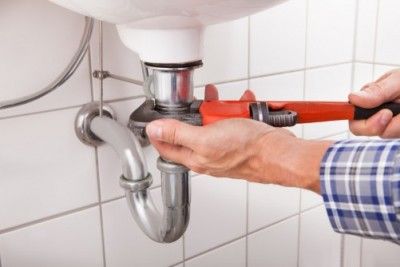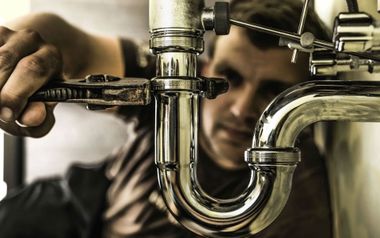Are you in search of facts and techniques concerning Understanding Your Home's Plumbing Anatomy?

Understanding just how your home's plumbing system functions is vital for every house owner. From delivering tidy water for drinking, food preparation, and bathing to securely removing wastewater, a properly maintained plumbing system is critical for your family's health and convenience. In this extensive guide, we'll discover the elaborate network that composes your home's plumbing and deal suggestions on upkeep, upgrades, and dealing with typical issues.
Intro
Your home's plumbing system is more than simply a network of pipelines; it's a complicated system that guarantees you have access to clean water and reliable wastewater removal. Recognizing its components and exactly how they interact can help you avoid pricey repair services and make certain every little thing runs efficiently.
Fundamental Components of a Pipes System
Pipes and Tubes
At the heart of your plumbing system are the pipelines and tubing that lug water throughout your home. These can be made of numerous materials such as copper, PVC, or PEX, each with its benefits in terms of longevity and cost-effectiveness.
Components: Sinks, Toilets, Showers, etc.
Fixtures like sinks, bathrooms, showers, and bathtubs are where water is utilized in your home. Comprehending how these fixtures attach to the plumbing system aids in diagnosing troubles and planning upgrades.
Valves and Shut-off Points
Shutoffs regulate the circulation of water in your plumbing system. Shut-off valves are important throughout emergency situations or when you need to make repair work, enabling you to separate parts of the system without interfering with water circulation to the whole residence.
Water System
Key Water Line
The main water line links your home to the local water supply or a personal well. It's where water enters your home and is distributed to numerous fixtures.
Water Meter and Stress Regulator
The water meter procedures your water usage, while a pressure regulatory authority ensures that water streams at a secure stress throughout your home's pipes system, preventing damage to pipelines and components.
Cold Water vs. Warm water Lines
Comprehending the difference in between cold water lines, which provide water straight from the major, and warm water lines, which bring heated water from the hot water heater, aids in repairing and preparing for upgrades.
Drain System
Drain Pipes Piping and Traps
Drain pipelines lug wastewater far from sinks, showers, and bathrooms to the drain or sewage-disposal tank. Traps avoid sewer gases from entering your home and also trap debris that might create obstructions.
Air flow Pipelines
Ventilation pipelines enable air right into the water drainage system, preventing suction that could reduce drainage and cause traps to vacant. Correct ventilation is crucial for keeping the stability of your pipes system.
Value of Correct Drainage
Guaranteeing appropriate water drainage prevents backups and water damage. Consistently cleaning drains and preserving catches can stop pricey repairs and extend the life of your plumbing system.
Water Heater
Sorts Of Hot Water Heater
Water heaters can be tankless or traditional tank-style. Tankless heating units heat water on demand, while storage tanks keep warmed water for instant usage.
Just How Water Heaters Connect to the Plumbing System
Comprehending exactly how hot water heater link to both the cold water supply and warm water circulation lines aids in detecting concerns like not enough hot water or leaks.
Maintenance Tips for Water Heaters
Regularly flushing your water heater to remove sediment, checking the temperature setups, and checking for leakages can prolong its life expectancy and enhance power effectiveness.
Typical Plumbing Issues
Leakages and Their Causes
Leaks can take place because of aging pipes, loosened fittings, or high water pressure. Resolving leakages promptly stops water damage and mold and mildew development.
Blockages and Blockages
Obstructions in drains and toilets are commonly triggered by flushing non-flushable things or a buildup of oil and hair. Utilizing drain displays and being mindful of what drops your drains can prevent obstructions.
Signs of Pipes Issues to Watch For
Low tide pressure, slow-moving drains, foul odors, or abnormally high water expenses are indicators of prospective plumbing issues that should be attended to promptly.
Pipes Upkeep Tips
Regular Examinations and Checks
Schedule annual pipes evaluations to capture problems early. Seek indications of leaks, corrosion, or mineral build-up in faucets and showerheads.
Do It Yourself Upkeep Tasks
Basic tasks like cleansing faucet aerators, checking for toilet leakages utilizing color tablet computers, or insulating revealed pipes in cool environments can prevent significant plumbing concerns.
When to Call an Expert Plumber
Know when a plumbing concern needs professional experience. Attempting intricate repair services without proper understanding can lead to even more damage and greater repair expenses.
Upgrading Your Pipes System
Factors for Upgrading
Updating to water-efficient fixtures or changing old pipes can enhance water quality, minimize water bills, and boost the worth of your home.
Modern Plumbing Technologies and Their Advantages
Explore innovations like smart leak detectors, water-saving commodes, and energy-efficient water heaters that can conserve cash and decrease ecological impact.
Expense Factors To Consider and ROI
Calculate the in advance costs versus long-lasting financial savings when considering plumbing upgrades. Several upgrades pay for themselves with lowered utility expenses and less repairs.
Environmental Influence and Preservation
Water-Saving Fixtures and Home Appliances
Mounting low-flow faucets, showerheads, and bathrooms can dramatically reduce water usage without giving up efficiency.
Tips for Minimizing Water Usage
Easy habits like dealing with leakages immediately, taking shorter showers, and running full loads of laundry and recipes can preserve water and lower your utility bills.
Eco-Friendly Plumbing Options
Take into consideration lasting pipes materials like bamboo for flooring, which is durable and environment-friendly, or recycled glass for counter tops.
Emergency situation Readiness
Actions to Take During a Plumbing Emergency
Know where your shut-off valves are located and exactly how to shut off the water in case of a ruptured pipeline or significant leakage.
Importance of Having Emergency Situation Calls Handy
Keep contact information for local plumbings or emergency services readily available for fast feedback throughout a plumbing crisis.
DIY Emergency Fixes (When Applicable).
Temporary fixes like using duct tape to spot a dripping pipe or positioning a pail under a trickling tap can lessen damages up until an expert plumbing technician arrives.
Conclusion.
Understanding the makeup of your home's pipes system encourages you to preserve it successfully, saving time and money on repairs. By adhering to routine maintenance routines and remaining educated regarding modern pipes innovations, you can ensure your pipes system operates successfully for many years to come.
How Should a Plumbing System Be Designed?
What's A Decent Plumbing Design?
A home's mechanical, electrical, and plumbing systems must be carefully considered throughout any construction or renovation projects, whether undertaken from the ground up or reworking existing rooms.
All three go hand in hand, and trained engineers or architects may design effective plumbing system plans. Plumbing problems might arise if the architects and builders who worked on your property neglected to include essential components of good plumbing design.
What Makes Plumbing Plans For Houses So Crucial?
Domestic buildings often have an intricate system of plumbing pipes running throughout the structure. It would help if you thus had a well-thought-out strategy before beginning construction on your new home.
According to teamemergencyplumber.com, a well-drawn plumbing plan for a home will show how the water and sewage systems work together. The MEP installations, of which plumbing systems are a component, contribute to the "creature comforts" of the building and are highly interactive with one another.
Successful Home Plumbing Design
The primary neurological system of every building is its plumbing system. Hence engineers and architects must work together to design it.
Main Building Codes
The plumbing system layout for a home must adhere to all applicable local construction requirements. The number of fixtures permitted on a given drain system, vent stack, the location of supply drains, and lines are all specified by the relevant building regulations.
It is important to have a well-designed plumbing system that complies with all applicable regulations. It is built with meticulous attention to detail so that it may pass muster during building inspections and adhere to all applicable rules and regulations.
Draft Of Supply
These blueprints calculate the approximate lengths and placements of hot and cold water supply lines. The package includes a variety of blueprints, as well as details on water, drain, and vent lines, as well as installation guidelines, legends, and explanatory comments.
Still, the plans don't always account for the fact that the pipes' precise placement may depend on the specifics of each building. Fixture placement, dimensions, the minimum height from the floor, distance from the wall, symbols, and other information are typically included in rough-in plumbing.
Gas Piping
Natural gas and propane appliances may be installed in nearly all homes. Fuel for the stove, oven, furnace, etc., is piped through iron, polyethylene, and steel pipes. Lines are combined using threaded fittings that screw together and are sealed at the joint the seal functions as a protective barrier to keep harmful substances out.
Heightening of the DWV
The system that transports the wastewater and air out of the home is called a Drain-Waste-Vent elevation, or DWV for short. This section addresses the direction that exhaust vents, drain pipes, and traps in plumbing fixtures all point upward. Primarily, it demonstrates how various fixtures' airflow will work. A reference drawing doesn't have to be made directly on top of architectural plans.
Pipes of the Appropriate Dimensions
Pipes must be properly sized to prevent future obstructions and costly repairs. Undersized pipes will prevent the system from working properly and will not fulfill plumbing standards.
Inadequate water pressure from the pipes or inconsistent water temperatures between fixture models is possible issues. Similarly crucial is selecting an appropriate pipe type. PVC pipes are widely used, but they break easily and must be replaced more often than stronger materials like copper or PEX after they're installed in a home.
The efficiency of the plumbing system and the reduction in future maintenance efforts are directly related to the material and size of the pipes.
Access to Water
Engineers and architects must provide workable solutions that propose a contaminant-free, continuous water supply at all times by preventing the connection of freshwater.
In addition, the concept allows for the water supply and DWV systems to be located close to one another, resulting in a hot water loop that helps save water and energy expenditures. Likewise, appropriate water flow is maintained by ensuring water can get from the reservoir to your home.
Electric water pumps in water supply systems enhance efficiency by facilitating seamless water circulation. Strategically placed pumps optimize water flow, reaching every part of the distribution network. To choose an electric water pump, assess your specific requirements, such as flow rate and pressure needs for residential or industrial use. Confirm that the pump's power specifications align with your electrical supply.
Select the appropriate type of pump, considering options like centrifugal or submersible based on your application. Factor in size, portability, and material construction, ensuring corrosion resistance for challenging environments. Evaluate maintenance accessibility and prioritize energy efficiency, considering variable speed options or pumps meeting efficiency standards. Check out Generator Pro to learn how electric pumps work.
Outdoors
The plumbing layout also shows where to attach the outside sinks. Depending on the layout of your home, you may have several outdoor water sources that all work together. However, your engineer or architect can help you determine what fittings will be required.
The plan can also include a water sprinkler system, an in-ground swimming pool, a hot tub, an outdoor kitchen, and a septic tank if necessary. If you ever decide to put your house up for sale, this sort of outside connection is sure to be a big plus.
https://amazingarchitecture.com/articles/how-should-a-plumbing-system-be-designed

I discovered that article on Understanding Your Home's Plumbing Anatomy when doing research the search engines. Loved our article? Please quickly share it. Let other people find it. Thanks a bunch for your time. Come back soon.
Schedule Today